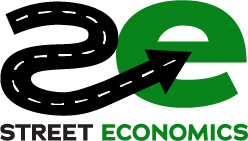The latest data from McKinsey highlights a trend that should challenge our thinking about economic growth: while the number of businesses in the U.S. has risen steadily, job creation hasn’t kept pace. This raises an important question for cities and towns focused on fostering local economic development: Are we measuring success by the right metrics?
The answer may lie not in the number of jobs created, but in the capital investment that fuels sustainable, appropriate growth.
The Evolving Dynamics of Business Growth
Not all businesses are created equal. Many of today’s new businesses—particularly in tech and e-commerce—are lean operations requiring minimal staff. They generate revenue and prestige but don’t necessarily create jobs at the scale communities might expect. By contrast, businesses rooted in local industries, such as hospitality, retail, or manufacturing, often have a more direct and immediate impact on the local labor market.
The problem isn’t that tech or other capital-intensive industries don’t have value. It’s that focusing solely on job creation overlooks a far more critical measure of economic health: capital investment. Capital investment drives everything else—construction, supply chains, infrastructure, and even the secondary effects of increased consumer spending. It’s the spark that powers broader economic activity.
Why Capital Investment Matters
Capital investment is the best lens through which to assess economic impact. It goes beyond headcounts and taps into the larger ripple effects of money deployed in a community. Consider the following:
- Infrastructure: Capital investment often funds infrastructure improvements that benefit the entire community, such as roads, utilities, and broadband connectivity.
- Supply Chain Growth: Investment attracts vendors and suppliers, further embedding economic activity into the local fabric.
- Property Value Increases: Well-placed investment can lead to higher property values, boosting tax revenues that fund schools, parks, and other community assets.
- Cultural and Economic Vibrancy: Investments in local assets—whether it’s a new business park or a revitalized downtown—can create places where people want to live, work, and spend their time.
The real power of capital investment lies in its ability to align with the economic activity it creates. Investment that matches the needs and opportunities of a community can have long-term, compounding benefits, unlike efforts that prioritize short-term job counts or business growth.
Rethinking Success in Local Economic Development
At BusinessFlare and Street Economics, we work with cities to rethink how they measure and achieve success. It’s not about attracting businesses for the sake of a headline or counting jobs like a scoreboard. It’s about fostering the kind of capital investment that aligns with the unique character and goals of the community.
Here’s how we approach it:
- Evaluate the Multiplier Effect: We focus on investments that create long-term benefits for the local economy, not just immediate gains.
- Prioritize Place-Based Strategies: Capital should be deployed to strengthen a community’s assets, whether that’s its Main Street, industrial zones, or burgeoning creative districts.
- Align Investment with Goals: Economic development isn’t one-size-fits-all. Successful cities channel investment into areas that support their broader economic, cultural, and social aspirations.
Building Vibrant Communities Through Investment
Capital investment is more than a financial transaction. It’s a vote of confidence in a place, a signal that the area has the potential to support not just one business but a thriving ecosystem. The cities that embrace this mindset—those that focus on creating the right conditions for sustainable investment—are the ones that will thrive.
Economic development is about more than just numbers. It’s about harnessing the power of investment to create communities where businesses, workers, and residents thrive together. By focusing on the quality of investment rather than just the quantity of growth, we can ensure that our cities build vibrant, sustainable economies for generations to come.
So let’s move beyond simple metrics like job creation or business counts. Let’s focus on the deeper, lasting impact of strategic capital investment—and how it can transform Main Streets into true engines of prosperity.




Comments are closed